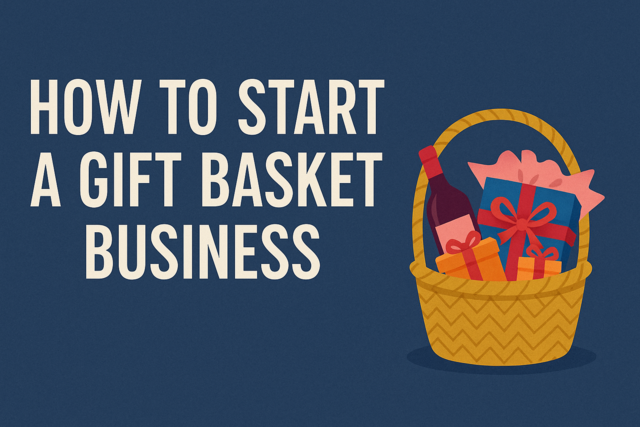So, you have decided to open your own home-based craft business.
Congratulations! This means that you obviously love your craft, and want to share it with others. Whether you like to knit, quilt, repair dolls, woodwork, crochet, or sew, you can be sure that people who do not have the ability, or the time, to make such crafts from scratch will appreciate your skills.
Whatever craft you decide on, be prepared for what to expect when operating a home-based craft business. You will have lots of fun, meet plenty of exciting people, and enter one of the friendliest industries there is. However, you will also want to be prepared for the financial aspects involved in running a home-based business, and that means understanding how to save on supply costs, how to sell your products, offer great customer service, and deal with financial obligations.
We will do our best to help prepare you for opening your own craft business. We will teach you how to target your market, how to determine avenues for selling your crafts, and how to reach the masses. Last but not least, we will offer tips on time management, helping you work efficiently in a home-based business, and how to find the best payment methods that suit you and your needs.
Pros And Cons of Opening a Home-Based Craft Business
The best part of opening your own home-based craft business, is doing something you love and getting paid for it. However, there are a few downsides to opening your own business, which you should explore and understand in order to make balanced, informed, and well-educated decisions regarding your business -- now and in the future.
Prepare yourself for potential problems ahead of time. This does not mean that problems will occur, but if they do, you will be prepared to deal with them. Make yourself a list of the possible pros and cons of opening your own home-based craft business, and then weigh your options, find ways to get around the cons, and head off problems before they start. Here is a list of possibles, just to get you thinking:
Pros:
- Set your own work hours
- Eliminate the need for daily commuting to a traditional workplace
- Work in the comfort and security of your own home
- Expend as much or as little time in your craft business as you want, depending on your goals
- Enjoy doing what you like in your free time, and make money doing it
Cons:
- No health insurance benefits (unless you opt for self-employed medical Insurance)
- Difficulty in anticipating regular income
- Inability to socialize as you would in a workplace environment
- Potential for boredom, or a sense of isolation
- Need for funding for supplies and overhead
Remember that your list of pros and cons may differ from someone else's. Your personality and goals may benefit from a home-based craft business, while others may eventually discover that a home-based business is not right for them.
Another thing to take into consideration is your family. In order for a home-based business to succeed -- and that includes craft businesses -- you have got to have the support of your entire family. Talk to your loved ones about your desire to start a home-based craft business, and make sure that your family can still pay the bills and live comfortably on the income provided by one traditionally-employed spouse.
Single parents, or singles who wish to open their own craft-based business at home, must be able to support themselves during slow times, or when first getting started. It may take several months to gather enough clients to make an adequate income to pay your bills without additional support.
Determine whether or not you want to operate your home-based craft business part-time or full-time. If you want to continue working in a traditional job, you may need to relegate your crafting to evenings and weekends. This will take time away from social activities and family time. However, most business owners, whether they work in the corporate field or from their homes, advise those just entering the business world that some sacrifice will be necessary in order to achieve goals.
What to Prepare For
You are ready to start your own craft business, so where do you start? First of all, you will need a skill. You may be a whiz at knitting, quilting, or building doll houses. You can make candles, soaps, and bath accessories, build birdhouses, create exquisite jewelry, or crochet baby blankets. Determine what you do best, and start with that. The potential is endless; you can be adept at making fishing lures or working in iron, stained glass, or tin. You can make chocolates, or design banners, greeting cards, or t-shirts.
Determine your basic skills, and what you can create with quality, over time. Naturally, quilting may take more time than knitting a baby cap, so determine the amount of time and effort it will take to create your products, and take that into consideration when deciding which crafts you want to offer for sale.
When determining the type of crafts you make for sale, do the same thing you did with the pros and cons of opening a home-based business. Determine your strengths and weaknesses. If you are not really adept at tatting, you may not want to offer such products early on. Stick to the things that you do best.
You may also want to consider how much your crafts will cost. It may cost more to produce custom jewelry or a quilt, than it will to knit baby blankets. You want to make money on your craft business, not lose it. If you will just break even, you will not get anywhere. Determine the cost of supplies, your time, and how much you are going to charge for your finished product. If you can not make money on it, you may want to adapt your ideas for products.
Depending on the types of crafts, and how many of them you want to offer, you may need some startup funds. Generally, operating a craft-based business out of your home does not require a great deal of overhead. You will spend most of your money on supplies, and perhaps redecorating or refurbishing a room in your home or garage space for your crafting.
However, determine the future costs of marketing your business -- which may include, but are not limited to, developing and maintaining a website, fees for attending craft shows, and purchasing your crafts supplies.
You also need to take the time to determine your target market. Who will buy your crafts? Determine prospective need or desire for your products. Are you intending to make most of your products in preparation for holiday buying? Are your products or crafts going to be themed, such as those offered for holidays, or can they be offered year round, like bath soaps, candles and home decor?
Are You Ready?
Starting your own home-based craft business is exciting and offers many opportunities, limited only by your imagination. Bring your sense of enthusiasm to your crafts, and focus your early marketing efforts on friends and family members. After you have taken the time to address some of the issues explained in this article, sit down, take a deep breath, and dive in.
Conclusion
Now that you have thought a little bit about the pros and cons of opening a home-based craft business, and what you might expect, it is time to focus your attention on some of the details involved in starting a home-based business.
Starting Your Home Craft Business
One of the most important aspects of starting your home-based craft business, is to create a name for your business that states who you are, and what you offer. This name should be easy to remember, and easy to develop an eventual website for, as well as encourage people to remember what, exactly, you offer.
Determining the types of products you are going to sell, and whether those products are going to be seasonal, offered year-round, or themed around holidays or events, will help you find a niche in the craft market.
Creating a Name for Your Business
When it comes time to name your business, a few tips may help you avoid common mistakes. Some of these mistakes are in creating names with a special meaning only to you, that may have nothing to do with your business. Make sure any name you choose is a natural sounding name that is easy to remember, say, and spell. Avoid using your city, state, or country in your company name, which may inhibit your future sales in today's global economy.
Try to limit the number of people involved in helping you come up with the company name. The more ideas you are presented with, the more choices you will need to narrow down. You may also end up with hurt feelings, so ask only close friends or family for advice. The best way around this issue, is to come up with several choices and ask those close to you to choose their favorites, in order of best to least. While you may end up with several different opinions, chances are that you will avoid a long, drawn-out debate over what to call the business, if too many choices, or people, are involved.
Most importantly, try to avoid the common mistake many new entrepreneurs make, which is to combine a noun and an adjective for a business name. Some examples include names like: Pretty Knits, Fancy Dolls, and Woody Woodcrafts, to name a few. This has been done, ad nauseam, so think of more unique and timely ideas for your business.
When thinking of a name for your craft business, think about future marketability and branding, which basically means making the name of your business easy to market, attract the customers you are trying to attract, and has the potential for building a name for yourself in the craft business. That means making sure that your business name sounds professional. Try to avoid overly cliche or "cutesy" names.
A few basic tips for creating an effective business name include, but are not limited to:
- Choosing a name that reflects what you do, or the products you produce.
- Look at other names of crafting businesses on the Internet, in your phone book, or around your community. What do you like? What do you not like? Determine what makes certain business names more effective than others.
- Choose a name that is easy to pronounce and spell.
- Avoid choosing a name for a business that only you understand, or is an inside family or personal joke. No one else will get it, and you may end up losing potential customers, because they have no idea what your business offers.
While you are busy choosing a business name, also think about taglines, which are two to three words, or short phrases or sentences, that may be used as a motto or saying on business cards, stationery, or in future marketing endeavors. You may want to consider keeping your business name as short and descriptive as possible, so when it comes time to create your website, your clients will not be challenged with difficult spelling, or remembering long domain names. We will talk more about developing a website, and online opportunities to grow and expand your business, in a later lesson.
Remember that your business name is going to personify what you do. In most cases, your business name will last years, and if you are fortunate, decades. While you do not have to have a business name to start, once you start selling products, developing invoices and receipts, or taking care of financial obligations, bank accounts, and the IRS, you will need a name, or at least a DBA (doing business as) for your tax returns.
Details, Details, Details
While you are working on developing a business name, and potential ideas and designs for taglines, logos, and other graphics for your business, you will want to determine the scope of your crafting business. For example, do you want to focus your products on holiday items, such as those commonly sold around Thanksgiving, Halloween, or Christmas? Do you want to focus on a specific craft, such as developing fishing lures, which can be sold all year long, but which may be especially timely for sale in the spring and summer?
Do you want to base your craft around a specific theme? For example, many crafters spend the entire year creating and designing Christmas-themed crafts, while others may choose those that focus on other holidays, such as the 4th of July, Halloween, or Thanksgiving.
Keep in mind that year-round products such as candles, soaps, bath products, knitted crafts, and quilts are items that may also be sold year-round, as long as they are not themed. Doll houses, birdhouses, and so forth, may also enjoy year-round demand. Determine how you can incorporate your skills and likes into developing products that can be sold all year. This will ensure a steady, monthly income, rather than months spent preparing themed or seasonal craft items that are usually only sold a few months out of the year.
You may also want to consider how useful your craft items are. For example, are your craft items made to be looked at, or used? Crafts that can be used, may enjoy more sales than those that are not. Regardless, handmade crafts are especially popular, as people typically appreciate the craft, skill, and attention to detail incorporated into home-crafted items.
Conclusion
Our next article will focus on targeting your market, and determining current demand for your items. When researching the market demand for certain crafted items, do not forget to take into consideration their potential for global appeal.

























